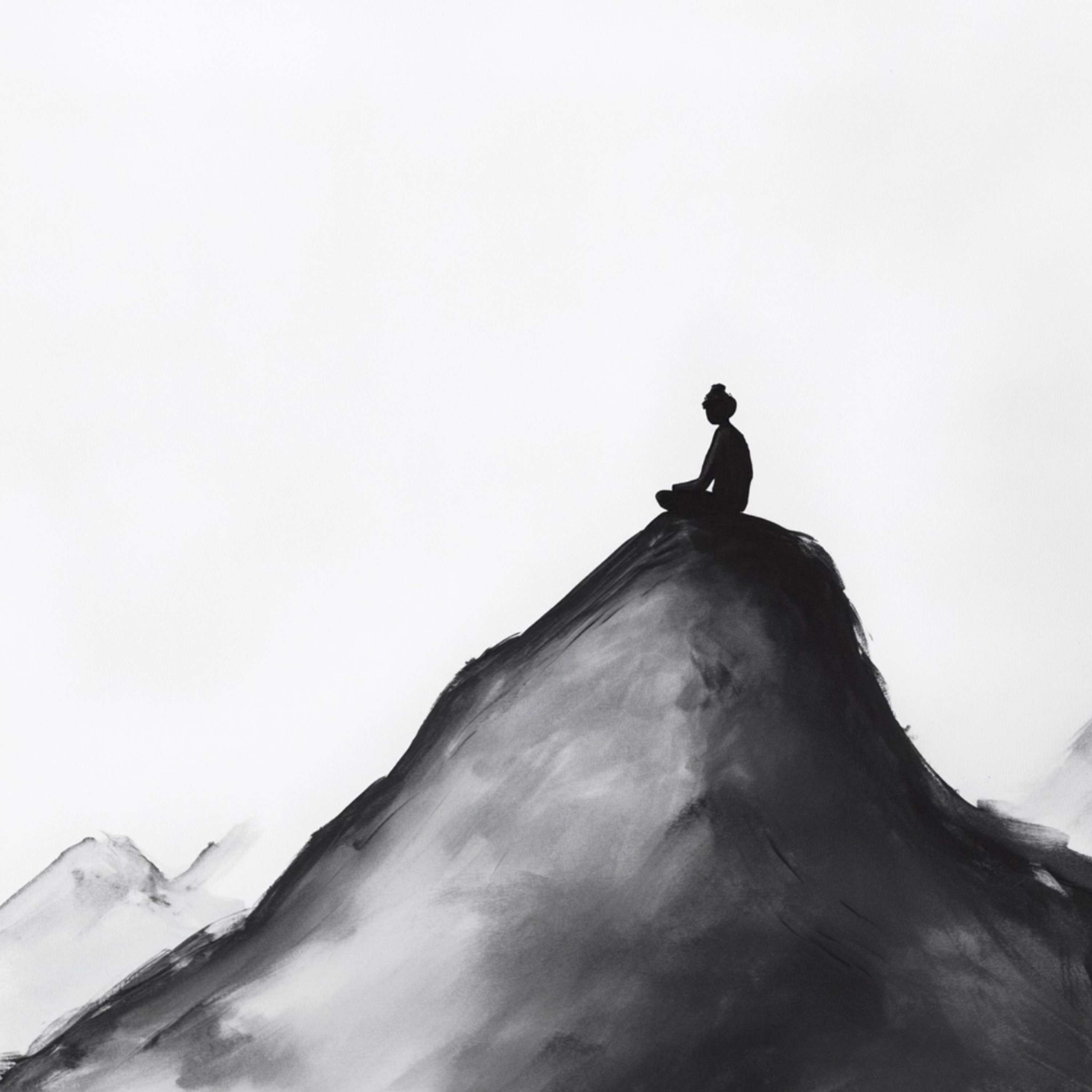Discover Wisdom and Compassion
Wisdom and Compassion

Wisdom and Compassion
Author: Lama Lekshe
Subscribed: 11Played: 94Subscribe
Share
© Dekeling
Description
Buddhism for here and now. The Wisdom and Compassion podcast is an offering of Dekeling, a Buddhist community in Portland, Oregon, dedicated to sharing the principles and practices of Buddhism in an accessible and inclusive way, to human beings everywhere. We support your right to awaken to your spiritual potential in whatever way inspires you.
36 Episodes
Reverse
Tonglen is part of the ancient compassion practice tool box of Seven Points of Mind Training. In this meditation, you're guided in Tonglen for yourself, at every stage of being, from pre-birth, though life, death and afterlife. Follow the instructions as you hear them and learn in real time where you are self-compassionate and where it does not yet flow freely. The best results will come from following along without talking to yourself as we go. Just listen and do—it's very simple. And then notice the moment-by-moment experience. There are several guided Tonglen meditations on the Wisdom and Compassion podcast list. We'll post more this year.
We can do Tonglen for someone who is dying if we are with them, or not. We can do Tonglen for people who have died at another time. whether we were there or not. Tonglen may be done for people we know, and complete strangers. Of course it can be done for animals, as well.
These are indeed difficult times and not the first and not the last. As practitioners, we have to find balance in chaos, or at least enough steadiness and equanimity to move forward to awakening and to ease the suffering of the world. In the midst of everything--is everything. In the midst of the worst times of darkness are light and wholeness. We have the tools to do this together.
The writer, Annie Dillard, in her book, The Writing Life, said “The life of sensation is the life of greed; it requires more and more. The life of the spirit requires less and less; time is ample and its passage sweet.” In this episode we explore the life of less and less, which as it turns out, is the life of more and more in the most delightful ways.
As practitioners, what is inclusivity? What is integration? How are these principles and practices entwined with truth and dharma?
Tonglen is a profound yet accessible practice in Tibetan Buddhism—an act of taking in suffering and sending out goodness. In a traditional tonglen session which is done in stages, we begin with ourselves, and progress to a loved one, a neutral person, a difficult person, and finally, all beings. But many people have difficulty in the stage of tonglen for self, just as they do with self-compassion in everyday life. In this episode, we break down the architecture of the segment of tonglen for self as we do the traditional sequence, lingering in detail in the stage of holding space for our own struggles without resistance or avoidance (among other things). Why do this? Because meeting our own suffering with openness and steady attention, rather than pushing it away allows us to learn more about suffering, our basic goodness, and compassion. Instead of getting stuck in cycles of self-judgment or repression, we take a direct and honest approach of being intimately present with this moment’s truth about ourselves and everything else. This isn’t about self-indulgence or wallowing. It isn’t about spiritual bypassing. It’s about the radical honesty of saying: Yes, this is here. And yes, I can hold it with kindness. And so much more. Lama Lekshe unpacks us in a guided meditation and answers a couple of questions. Experience for yourself the power of tonglen to transform the way you meet your own mind with intimacy, integration, and healing through non-conceptual presence and awareness.
This episode was originally published on April 28, 2020. Everything you need to awaken is right here, right now. It's your life. Will you live it? Dekeling, in Tibetan, means 'a place of happiness'. Our offering is to support for your dharma practice & your life in an accessible, inclusive way. All are welcome. All are very welcome. https://www.dekeling.online/ The music for this episode is “Starlight” - by Podington Bear of Portland, Oregon - Thanks to composer Chad Crouch. Support Chad here.
This simple meditation can help you calm and stay present in experience. No bells, no liturgy, just simple bare-bones mind on the breath meditation.
In this classic Buddhist meditation, we use the experiential metaphor of sitting like a mountain to help accomplish stability, stillness, and groundedness in the midst of change, busyness, and all the 'weather' of life.
In this episode Lama Lekshe talks about sage advice from other practitioners and her own journey to discover the possibility of resting...all the time.
Using the metaphor of snowfall, experience absorbing the wellbeing that is always available, no matter the circumstances. Care for yourself and all beings as you share the experience with a larger group of beings in each stage of in the classic way of 'dissolving the barriers.' This not only sets the stage for cultivation of compassion for yourself, loved ones, strangers, people you find difficult and all beings—it also gives an experiential taste of non-duality.
Challenging times can be the best times to practice. Suffering is compelling, so you might find that resting awareness on your experience is easier than when things are going well. This episode has a longish riff on how to find a teacher and how you know when you've met a true teacher.
This is a brief guided meditation on the stages of dying or 'bardos.' In Buddhism, the term 'bardo' typically refers to the intermediate state between death and rebirth; though it can refer to any transition. The most well-known and elaborated upon teachings on the bardo come from texts like the Tibetan Book of the Dead (also known as the Bardo Thodol), which is a key text in the Nyingma tradition.The Bardo teachings often outline various stages or phases that the consciousness of a deceased person passes through, providing guidance on how to navigate these states and ultimately attain a favorable rebirth or liberation from the cycle of existence (samsara). The meditations on the Bardo are designed to help practitioners prepare for death, navigate the intermediate state, and possibly attain enlightenment. This particular meditation is quite short and has just a few such details on each stage.
Why would I experiment of holding a view if I am not sure it's true? This experiment can cause you to learn something beyond your current knowing—through direct experience. No belief is required. Just hold a new view, and see how it impacts your thoughts, speech and actions. If you like the effects, continue holding the view. If not, you can always try it again later—or not!
You know those rumors you heard about Tibetan Buddhism? Listen and see if they are true. Any time we adopt a custom, philosophy or tradition from another culture, we're bound to misinterpret a few things. This talk unravels a few of the veils of misunderstanding surrounding Tibetan Buddhism, shedding light on misconceptions that sometimes obscure its profound teachings.
The mindful recitation of Seven-Branch Prayer, which is often done inside another practice—like Green Tara, for example— epitomizes all the practices of gathering the accumulations as well as the purification of harmful deeds, thoughts, or speech and also of obscurations. All the major points of practice are present in the Seven Branches. Each of the branches antidotes a specific obstacle in practice. There is a reference in this episode to the Four Powers, also, which is a framework for confession, since confession is one of the Seven Branches.
Step into a space of introspection and compassionate inquiry as you embark on a contemplative journey through the landscape of global conflict. If you are an experienced practitioner of Tonglen, you already understand its profound power to use suffering as a springboard for compassion; to allow fear to be a foundation for courage, and for contemplation of conflict to blossom into a wider and deeper understanding. Today, we'll practice beyond the boundaries of our personal experiences and into the expansive realm of global discord.Together, in quiet reflection, acknowledging the complexities and pain woven into the fabric of our world, we breathe in suffering with the compassionate wish to take it on. With each mindful breath, we will draw in the collective suffering of those embroiled in conflicts near and far, feeling the weight of their struggles, their hopes, and their fears as they mingle with our own breath.And then, as we exhale, we us offer boundless compassion and healing energy to all beings affected by strife and discord, visualizing rays of light emanating from your body, reaching out to touch the lives of those caught in the throes of conflict. With each exhale, offer whatever is needed to heal and soothe. if you have peace, send it all, without any exclusion. As you navigate through this contemplative session, stay grounded in the present moment, noticing whatever arises in your experience, allowing sensations to arise and pass without judgement or commentary. Trust in the innate wisdom of your heart to guide you through this journey of profound interconnectedness and the learning of direct experience, free from storyline. As usual, after using this guided audio a few times, move to Tonglen without any audio so you can rest all attention on your direct experience, unimpeded by words. The music for this episode is “Starlight” - by Podington Bear of Portland, Oregon - Thanks to composer Chad Crouch. Support Chad here.
As we journey through life, our paths often intertwine with those of animals, who become companions on our journey. Their presence enriches our lives, offering us love, loyalty, and a profound connection to the natural world. In their eyes, we see reflections of ourselves, reminding us that their lives and deaths are no less significant than our own. In moments of transition, such as when a beloved animal companion approaches the end of their life, we may turn to practices like Tonglen to offer comfort and support.Tonglen, a Tibetan Buddhist meditation technique, invites us to breathe in the suffering of others and breathe out compassion and relief. In this practice, the familiar sequence remains, yet with a heartfelt integration of animals. As we sit with our dying animal companion, we visualize taking in their pain and fear with each inhalation, allowing ourselves to fully acknowledge and empathize with their experience. With each exhalation, we offer them peace, comfort, and love, surrounding them with warmth and tenderness.One of the beautiful aspects of Tonglen is its flexibility. We can adapt it to suit the needs of the moment, pausing the guided audio at any time to extend the meditation if needed. This flexibility allows us to linger in moments of connection and release, honoring the unique journey of our animal companion. Another approach is to engage in this practice several times with guidance, allowing the rhythm and familiarity to deepen our understanding. Then, as we become more comfortable, we can transition to practicing on our own, moving through the meditation more spaciously and slowly, allowing for a deeper, more personal connection to unfold.In these tender moments, as we navigate the inevitable transitions of life and death with our animal companions, Tonglen offers a pathway to grace and acceptance. Through our shared breath and boundless compassion, we honor the sacredness of their journey and find solace in the interconnectedness of all beings, thereby also extending our direct experience with impermanence, interconnectedness and the truth of suffering. Remember to do Refuge and Bodhicitta and Dedication if these are a part of your practice. The music for this episode is “Starlight” - by Podington Bear of Portland, Oregon - Thanks to composer Chad Crouch. Support Chad here.
Counting the breath meditation involves a deliberate and focused observation of the breath. The practitioner assumes a comfortable posture conducive to alertness and relaxation. With eyes either gently closed or slightly open, attention is drawn inward to the sensation of breathing.As the breath flows naturally, the practitioner directs their awareness to the rhythm of exhalation. With each outbreath, there is a mental noting or counting of the breath. This counting occurs silently within the mind. The practitioner may choose to count from one to a predetermined number, often up to ten or twenty.The focus is solely on the sensation of the breath leaving the body. The practitioner observes the entire duration of the outbreath, from the initial release of air to the moment it ceases. Each exhalation is acknowledged with a mental count.Throughout this practice, the practitioner maintains a gentle yet unwavering attention on the breath. The counting serves as an anchor, grounding the mind in the present moment and providing a focal point for concentration. It serves to minimize distractions and wandering thoughts.The music for this episode is “Starlight” - by Podington Bear of Portland, Oregon - Thanks to composer Chad Crouch. Support Chad here.
In Tibetan Buddhism, the term "bardo" refers to the intermediate states between death and rebirth. The most well-known bardo is the "Bardo Thodol" or the "Tibetan Book of the Dead," which describes the experiences one goes through during the intermediate state after death. According to Tibetan Buddhist belief, how one navigates these bardos greatly influences the next rebirth.Meditations on the stages of the bardos typically involve practices aimed at familiarizing practitioners with the experiences they will encounter during these intermediate states and training them to recognize and utilize the opportunities presented therein. Here are some key stages of the bardos and corresponding meditative practices:Chikhai Bardo (Bardo of the Moment of Death): This bardo begins at the moment of death and involves the dissolution of the elements composing the physical body. Meditation practices in preparation for this stage focus on cultivating awareness of impermanence, letting go of attachments, and maintaining mindfulness in the face of the dissolution process.Chönyid Bardo (Bardo of the Luminosity): This stage is characterized by the appearance of clear light, which is considered the fundamental nature of mind. Meditations in this bardo aim to recognize and merge with the luminosity of mind, leading to liberation from samsara.Sidpa Bardo (Bardo of Rebirth): In this stage, the consciousness seeks a new rebirth. Meditative practices here often involve cultivating virtuous thoughts and intentions to guide consciousness towards a favorable rebirth, such as in a human or celestial realm.Meditations on the bardos are often part of advanced tantric practices within Tibetan Buddhism. These practices require guidance from qualified teachers and are typically undertaken by experienced practitioners who have developed a strong foundation in foundational Buddhist teachings and meditation techniques. The aim of these meditations is to transform one's understanding of death and rebirth, leading to spiritual awakening and liberation from cyclic existence (samsara).The music for this episode is “Starlight” - by Podington Bear of Portland, Oregon - Thanks to composer Chad Crouch. Support Chad here.

















this is a BBC wonderful podcast, truly full of wisdom and compassion. Lama Lekshe share a lifetime of love with others